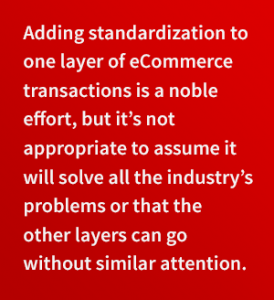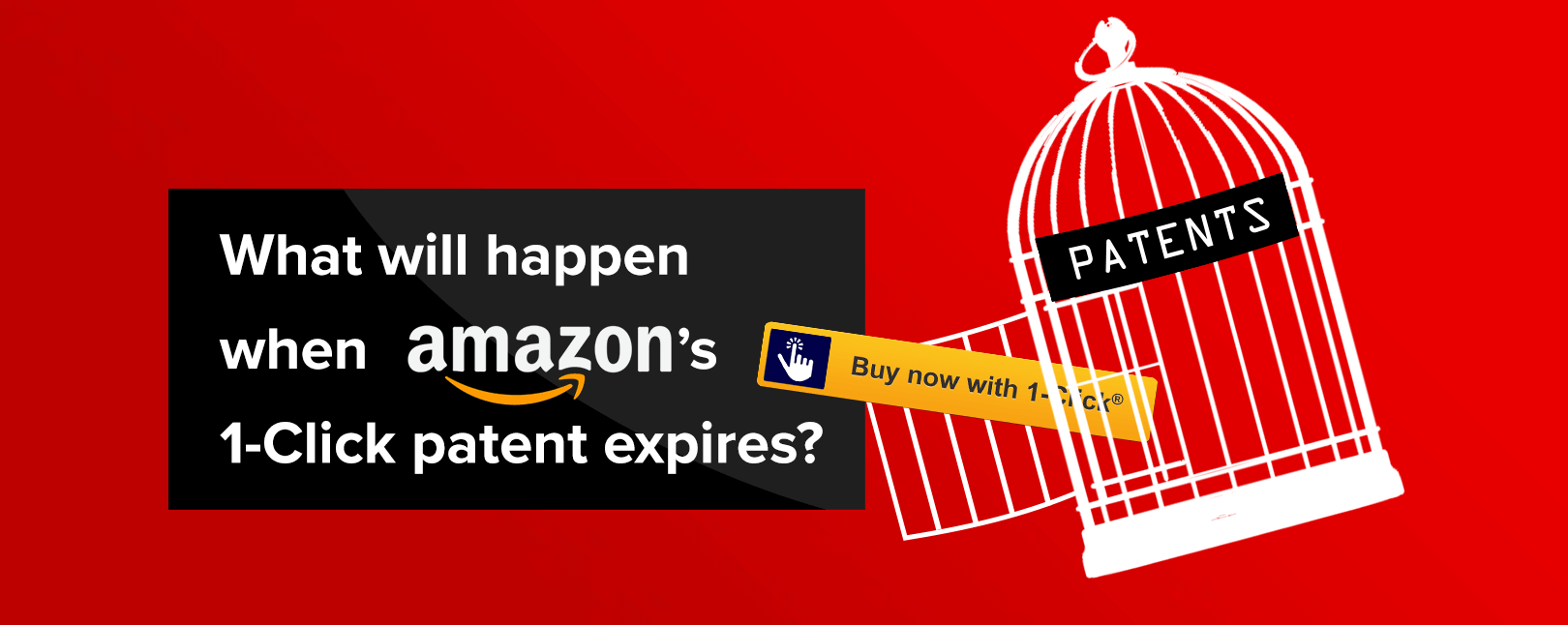Amazon Patent Expires: 1-Click Buying Goes Global
Over the past two decades, Amazon has evolved into one of the world’s largest online retailers.
Amazon’s success is owed to many different factors, primarily the company’s ability to innovate and anticipate consumer preferences. One such example is the company’s foresight to patent a seemingly inconsequential functionality long before the genius of it was realized: 1-click buying.
After dominating the ability to perform fast, easy purchases for the last 20 years, Amazon’s 1-click buying patent is set to expire in 2017.
What will happen once this innovation is shared with eCommerce merchants everywhere?
1-Click Buying Comes Up for Grabs
Amazon has long been a trendsetter for eCommerce, pioneering many of today’s most in-demand conveniences:
- Free two-day shipping and same-day delivery
- Free return shipping
- IoT technologies (Amazon Dash)
- Omnichannel experiences (Amazon Go, Amazon Prime Now)
- Digital content (Amazon Kindle, Amazon Video)
Examining these innovations objectively, it’s apparent that Amazon’s strength has always been their ability to anticipate market changes and implement solutions in advance. At the same time, the apparent ease with which they meet and surpass consumer expectations puts significant strain on smaller merchants who lack the agility and resources to keep up.
One of the earliest examples of this came when Amazon filed for a US patent on their 1-click ordering methodology in 1997. The company has since held the exclusive right to store payment information and execute subsequent purchases with a single mouse click. Any other retailer who wanted to offer 1-click buying had to license the concept from Amazon—Apple, Inc. being a notable example.
But soon, Amazon’s patent will expire, opening 1-click buying throughout the US market and enabling thousands of merchants to adopt this tried-and-true technology.
The industry has already witnessed how 1-click buying helped Amazon drive sales, reduce friction, and create a more positive customer experience. However, it remains to be seen if other merchants will be able to replicate Amazon’s success or if the industry is primed for major complications.
Merchants: Prepare for Challenges
Over the years, consumers have come to believe that the advanced capabilities of Amazon are the new norm. They expect similar services to be provided by all eCommerce merchants. In many regards, smaller merchants have failed to live up to expectations, but the availability of 1-click buying changes all that.
As merchants rush to fill their 20-year old void, the rapid and widespread adoption of one-click ordering will lead to a great deal of inconsistency and confusion in the industry.
Based on what experts at Chargebacks911® have observed over the years, greater inconsistency inevitably leads to increased threats to profitability. The danger is compounded as merchants, enthusiastic to meet consumers’ demands, proceed without adequate risk mitigation strategies in place. This presents several very serious risk management issues:
- Insufficient front-end authorization will lead to unauthorized transactions or overzealous fraud management will increase false positives.
- Shoppers’ accidental clicks and impulse buys will generate more friendly fraud.
- The ease in which children will be able to authorize transactions without parents’ knowledge will cause greater instances of family fraud.
- Consumers will forget to update shipping information, increasing ‘undelivered merchandise’ chargebacks.
- Removing fraud tools like CVV reduces the effectiveness of chargeback disputes.
It is imperative that merchants analyze all potential risks associated with 1-click ordering and devise an appropriate mitigation plan. Proactive merchants will fare much better than reactive ones.
If you’d like assistance devising a risk mitigation plan, contact Chargebacks911 today.
Industry: Prepare for Innovation Opportunities
While merchants must prepare for potential challenges, the industry as a whole can look forward to plenty of innovation opportunities.
Amazon was denied a 1-click buying patent in Europe because the technology lacked inventiveness. Perhaps now that merchants—who are currently driving the majority of disruptive payment innovation—are given full access to what should have been a widely-utilized technology, we will experience even more advanced payment capabilities with even greater fraud protection.
For example, consider the way in which Apple took the 1-click buying concept and redeveloped it into one of the most secure payment technologies currently on the market: Apple Pay.
Apple Pay allows customers to securely store their account information, then authorize transactions using fingerprint-recognition technology. Apple Pay utilizes the same tokenization technology as chip cards following the EMV liability shift, making it considerably more secure than traditional online checkout methodologies.
New Developments Won’t Solve Old Problems
The possibilities associated with widespread adoption of 1-click buying are intriguing. However, it’s important to recognize the limitations of future promise.
There are multiple layers to card acceptance and payment processing. Each layer needs its own set of standards and enforced compliance with those rules. Already, the World Wide Web Consortium (W3C) is working on standardization for the one-click ordering layer of eCommerce.
In conjunction with Microsoft, Google, Facebook, and other global brands, the W3C is rushing to fill the void of Amazon’s patent. Proposed guidelines will outline processes for merchants, consumers, and card networks, while streamlining efforts for developers, shopping carts, and gateways.
 However, W3C’s efforts only address one of many payment processing layers, as evident by the fact they're leaving out a couple of very important entities—issuers and acquirers.
However, W3C’s efforts only address one of many payment processing layers, as evident by the fact they're leaving out a couple of very important entities—issuers and acquirers.
The industry cannot misconstrue W3C’s efforts as the only governance needed for safe and compliant 1-click transactions. Rather, the process will emphasize the need for additional standardization efforts.
Faster, friction-free transactions increase the ease in which consumers complete transactions while decreasing the recognition of cardholder obligations. This leads to greater vulnerabilities for issuers—which they aren’t equipped to handle. The influx of illegitimate chargebacks will further strip issuers of the responsibility to adhere to an industry-wide, consistently-applied process.
Adding standardization to one layer of eCommerce transactions is a noble effort, but it’s not appropriate to assume it will solve all the industry’s problems or that the other layers can go without similar attention.
What is really needed is standardization and compliance on all layers. These standards need to complement each other and make each layer more efficient.
Risk Mitigation is More Vital than Ever Before
The industry is in a precarious position. Those who recognize and respond to impending opportunities will be able to create a proactive strategy to capitalize on them.
If you’d like to realize the full potential of 1-click buying, contact Chargebacks911 today to create a comprehensive risk mitigation strategy.










